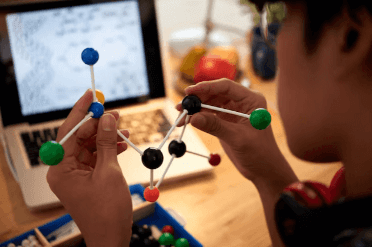Question
a.
electronegativity of Period 3 elements is more then 0.5
b.
electronegativity of Period 3 elements is above 3.5
c.
electronegativity of Period 3 elements is lower than 1.7
d.
higher the difference in electronegativity of O₂ and Period 3 elements.
Posted under Chemistry
Interact with the Community - Share Your Thoughts
Uncertain About the Answer? Seek Clarification Here.
Understand the Explanation? Include it Here.
Q. Upon reaction of O₂ with metals of Period 3 elements, ionic bonds are formed if the
Similar Questions
Explore Relevant Multiple Choice Questions (MCQs)
Q. The ionic equation O⁻²(aq)+ H₂O(l) → 2OH⁻. This will result in an
View solution
Q. The magnitude of ionization energy depends upon
View solution
Q. The ionization energy between last element of one period and first element of next period receives a rapid
View solution
Q. The nuclear charge increases in periodic table
View solution
Q. The electronic configuration is evident by the successive
View solution
Q. The force of attraction between nucleus and electrons increases across periods because
View solution
Q. The force of repulsion between electron pairs causes to remove electron with less
View solution
Q. There is less attraction between the fifth electron of Boron and nucleus, hence that electron resides in
View solution
Q. The electronic configuration of electrons involves their addition starting from lowest energy level to
View solution
Q. Electrons always reside in certain energy level outside
View solution
Q. The number of lobes in p-orbital is
View solution
Q. The nuclear charge down the group
View solution
Q. The less amount of attraction between the nucleus and outer electrons is due to
View solution
Q. The process by which electrons spin and pair up against each other is called
View solution
Q. Boron has one more proton than
View solution
Q. The energy level which is closest to nucleus has
View solution
Q. The decrease in the force of attraction is due to the increase in the
View solution
Q. The aqueous phase contains ions
View solution
Q. The substance used as decolourization agent is
View solution
Q. The distance travelled by the solute divided by the distance travelled by the solvent front is
View solution
Recommended Subjects
Are you eager to expand your knowledge beyond Chemistry? We've handpicked a range of related categories that you might find intriguing.
Click on the categories below to discover a wealth of MCQs and enrich your understanding of various subjects. Happy exploring!








